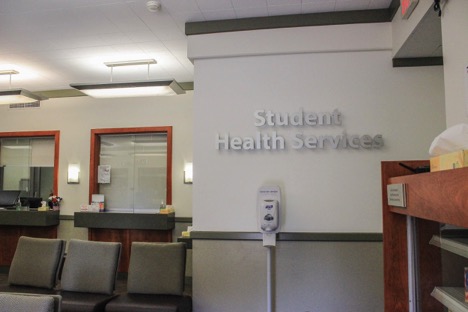As a student coming from the San Bernardino City Unified School District, it is clear to me that there is a lack of health resources in K-12. One small office with a nurse for thousands of students doesn’t cut it. I believe that local school districts need to reevaluate the health resources colleges provide for students. The districts could work with the state government to utilize MediCal and other health insurances to bring a center on campus to utilize their health insurance benefits on campus or implement a student fee to pay for health center fees.
Most, if not all colleges ask undergraduate and graduate students to invest in their health by paying an enrollment health fee to support the resources coming out of their health centers. I agree with this method because you’re able to pay a small fee for various resources but also feel an insurance package would provide better quality care. Here’s a breakdown of costs and resources between three local college systems to see what I’m talking about: San Bernardino Valley College (SBVC), California State University of San Bernardino (CSUSB), and the University of California, Riverside (UCR).
While attending SBVC, I realized that I had been paying a $19 health fee every semester. This meant that Monday-Thursday between 8:00am-4:30pm (Friday hours vary) I could access: a registered nurse (RN) who could examine any injuries, recommend prescriptions, give free condoms, schedule counseling appointments for psychological purposes, steer me to health related workshops/events, refer me to a qualified Gallup Strengths Coach, and provide minimal costs for other things like: a TB skin test ($10), birth control and other referrals.
After speaking with a representative from the CSUSB health office, I learned that the institution requires a fee, which varies and is dependent on the state government. Their summer health fee for 2017 was $70.74, which could change any quarter. This fee gives students access to: first aid, x-ray services, different types of psychological counseling, Physicals, information on birth control/contraceptives, vaccines, emergency contraception, and a TB skin test Monday-Friday between 8:00am-5:00pm (Friday hours vary).
The University of California system requires students to have a quarterly health insurance premium called University Student Health Insurance Plan (USHIP) which in 2017 costs $585.92. This gives students access to five nationally ranked medical centers that include: Davis, Los Angeles, Irvine, San Diego, and San Francisco. This automatic enrollment to USHIP means medical, dental, pharmacy, and vision coverage. In addition, the health center works to bring workshops and programs with the Well, an overall wellness resource office; Active Minds, a nonprofit focused on mental health, and the Campus Advocacy Resources and Education (CARE) office which focuses on survivors of sexual violence, relationship violence and stalking.
I believe that is it extremely necessary for all institutions of education especially local school districts in the Inland Empire to do more to provide quality health resources for students because if people’s health isn’t well they’re going to make all other aspects of life more difficult.
More information on SBCUSD health services
More information on SBVC health services.
More information on CSUSB health services.
More information on UCR health services.
Rocio Aguayo
Latest posts by Rocio Aguayo (see all)
- Perspectivas desde Inland Empire: Como los Ingresos Afectan los Resultados de Aprendizaje en los Estudiantes - January 31, 2019
- Perspectives from the Inland Empire: How Income Impacts Student Learning Outcomes - January 30, 2019
- Luchadora Alex Beltran esta en un Empate Con el Titular de San Bernardino en el Consejo Municipal - December 4, 2018
- Luchadora Alex Beltran is Neck and Neck with San Bernardino Incumbent in City Council Race - December 4, 2018
- Los Jóvenes Pueden Hacer Una Diferencia en Esta elección, Incluso si son Demasiado Jóvenes para Votar - November 6, 2018

